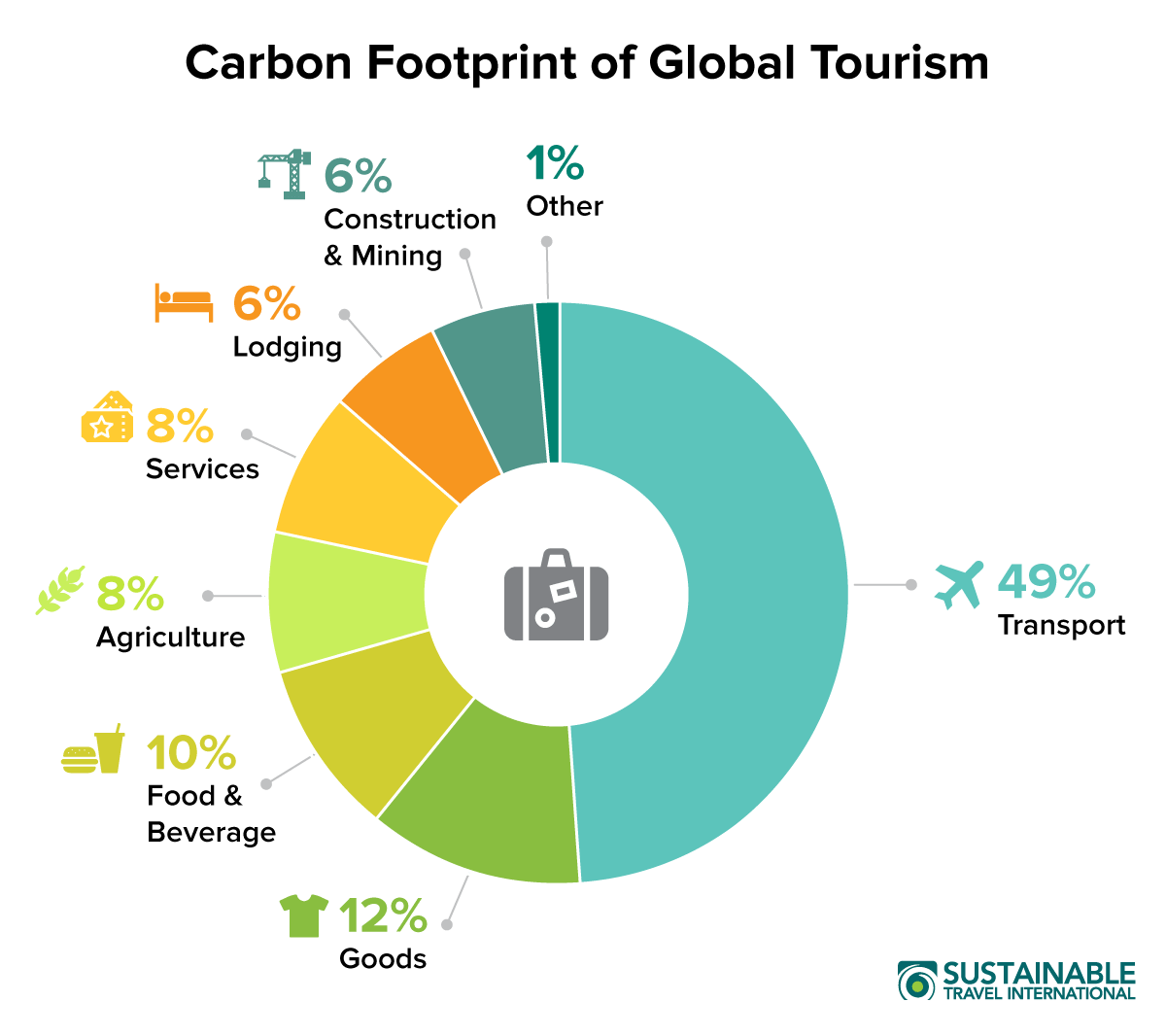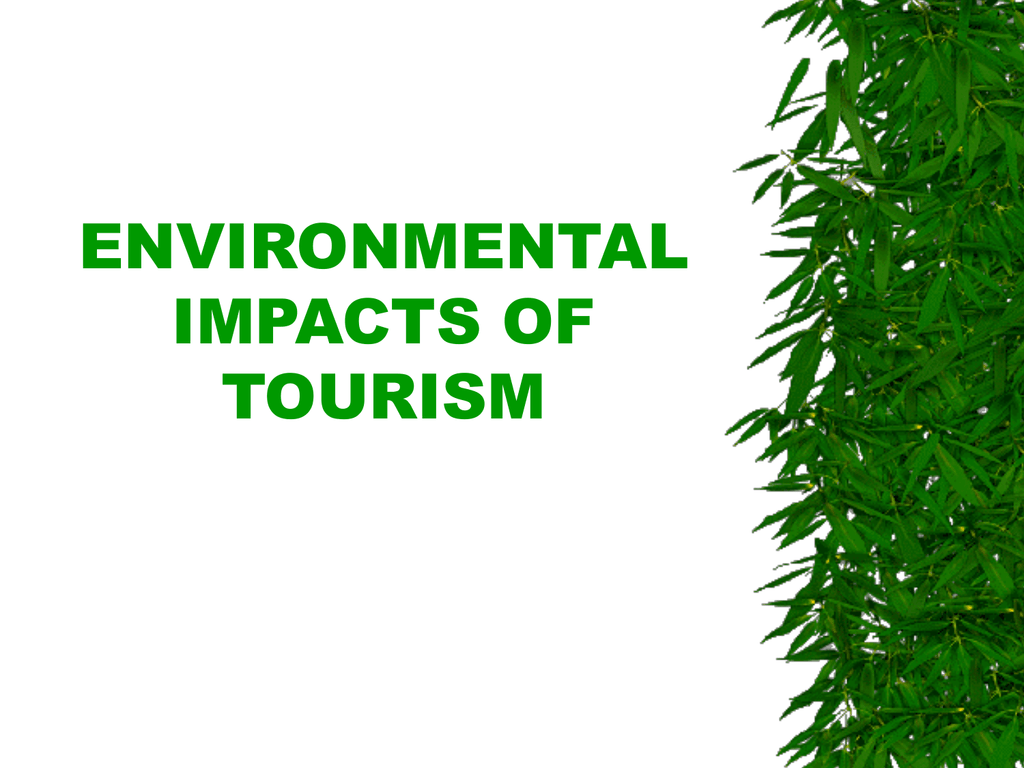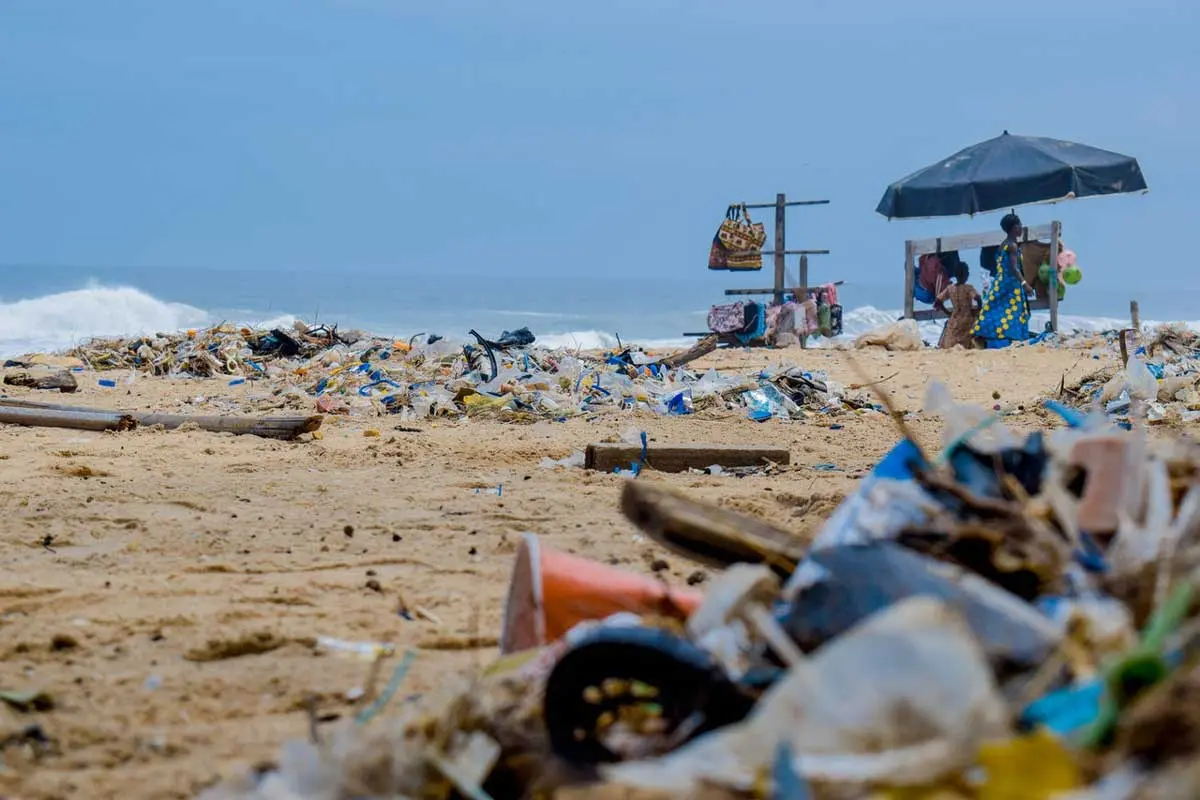Environmental issues in tourism industry pose significant challenges, but also present opportunities for sustainable practices. From pollution and habitat destruction to resource depletion, tourism’s environmental impact demands attention.
Understanding the causes and consequences of these issues is crucial for developing effective solutions. Sustainable tourism initiatives, environmental regulations, and education play vital roles in mitigating tourism’s environmental footprint while preserving the natural beauty that attracts visitors in the first place.
Environmental Impact of Tourism
Tourism, while a significant economic driver, can also pose challenges to the environment. Its activities often result in pollution, habitat destruction, and resource depletion, leading to environmental degradation.
Popular tourist destinations, such as the Great Barrier Reef and the Galapagos Islands, have experienced severe damage due to increased tourist traffic. Pollution from boat engines, sunscreen, and waste disposal has harmed marine life and coral reefs.
Role of Transportation
Transportation plays a crucial role in tourism’s environmental impact. Air travel, a major mode of transport for tourists, contributes significantly to greenhouse gas emissions. Sustainable transportation options, such as electric vehicles and public transportation, can help reduce this impact.
Sustainable Tourism Practices

Sustainable tourism is a form of tourism that aims to minimize negative impacts on the environment and local communities while maximizing positive impacts. It involves responsible travel practices that preserve the natural and cultural heritage of a destination while providing economic benefits to local communities.Sustainable tourism principles include:
- Minimizing environmental impacts by reducing pollution, conserving resources, and protecting biodiversity.
- Respecting and preserving cultural heritage, traditions, and values.
- Providing economic benefits to local communities through job creation, income generation, and support for local businesses.
- Educating tourists about responsible travel practices and the importance of protecting the environment and local cultures.
Examples of Successful Sustainable Tourism Initiatives
- The Great Barrier Reef Marine Park Authority has implemented a range of sustainable tourism practices, including limiting visitor numbers, establishing no-take zones, and promoting responsible diving and snorkeling practices.
- The Costa Rican Tourism Board has developed a national certification program for sustainable tourism businesses, which recognizes businesses that meet strict environmental and social standards.
- The Maasai Mara National Reserve in Kenya has partnered with local communities to establish community-based tourism initiatives that provide economic benefits to local people while protecting wildlife and the environment.
Benefits of Sustainable Tourism
Sustainable tourism offers numerous benefits for both the environment and local communities. For the environment, it helps to protect biodiversity, reduce pollution, and conserve natural resources. For local communities, it can provide economic benefits through job creation, income generation, and support for local businesses.
It can also help to preserve cultural heritage, traditions, and values, and foster a sense of pride in the local community.
Environmental Regulations and Policies: Environmental Issues In Tourism Industry

The tourism industry is subject to a range of environmental regulations and policies designed to minimize its impact on the natural environment. These regulations vary from country to country, but they typically include requirements for businesses to manage their waste, conserve water and energy, and protect biodiversity.
Implementing effective environmental regulations in the tourism industry can be challenging. One of the main challenges is the fact that tourism is often a highly seasonal industry, which can make it difficult for businesses to comply with regulations during peak periods.
Additionally, the tourism industry is often fragmented, with many small businesses that may not have the resources to invest in environmental protection measures.
Despite these challenges, there are a number of opportunities for implementing effective environmental regulations in the tourism industry. One opportunity is to work with businesses to develop innovative solutions to environmental problems. For example, some businesses have developed new technologies to reduce their water consumption or waste production.
Another opportunity is to educate tourists about the importance of environmental protection and encourage them to make sustainable choices.
International organizations play an important role in promoting sustainable tourism practices. The World Tourism Organization (UNWTO) has developed a number of guidelines and standards for sustainable tourism, and it works with governments and businesses to implement these standards.
Key Environmental Regulations and Policies
- Environmental Impact Assessments (EIAs): EIAs are required for major tourism development projects to assess their potential environmental impact and develop mitigation measures.
- Waste Management Regulations: These regulations require businesses to properly manage their waste, including recycling, composting, and proper disposal.
- Water Conservation Regulations: These regulations require businesses to conserve water, including using low-flow fixtures and implementing water-saving practices.
- Energy Efficiency Regulations: These regulations require businesses to use energy-efficient appliances and equipment.
- Biodiversity Protection Regulations: These regulations protect endangered species and their habitats from tourism activities.
Education and Awareness
Educating tourists about their environmental impact is paramount in promoting sustainable tourism practices. By fostering an understanding of the consequences of their actions, tourists can make informed decisions that minimize their ecological footprint.
Successful educational campaigns have been implemented worldwide to raise awareness about sustainable tourism. For instance, the “Leave No Trace” program, established in 1994, has educated millions of outdoor enthusiasts on responsible practices, such as minimizing campfire impact and packing out waste.
Role of Media and Technology, Environmental issues in tourism industry
Media and technology play a vital role in disseminating environmental awareness among tourists. Social media platforms, online travel guides, and mobile applications provide valuable channels for sharing information about sustainable destinations, eco-friendly accommodations, and responsible tour operators.
- Social Media:Platforms like Instagram and Facebook enable influencers and tourism boards to showcase sustainable practices and inspire followers to adopt eco-conscious travel habits.
- Online Travel Guides:Websites such as Lonely Planet and Tripadvisor incorporate sustainability ratings into their reviews, helping tourists identify eco-friendly options.
- Mobile Applications:Apps like “WWF Travel” provide users with real-time information on responsible tourism practices and destinations.
Technology and Innovation

Advancements in technology provide innovative solutions to support sustainable tourism practices. These advancements can enhance environmental monitoring, mitigate impacts, and foster informed decision-making.
Technology plays a crucial role in monitoring and mitigating environmental impacts. Remote sensing and geographic information systems (GIS) enable the collection and analysis of data on tourism-related activities, such as visitor numbers, waste generation, and energy consumption. This data can be used to identify areas of concern and develop targeted strategies to address them.
Artificial Intelligence and Data Analytics
Artificial intelligence (AI) and data analytics offer powerful tools for improving tourism sustainability. AI can be used to analyze large datasets and identify patterns and trends that may not be apparent to humans. This information can be used to optimize operations, reduce waste, and enhance visitor experiences while minimizing environmental impacts.
Conclusion

Addressing environmental issues in tourism industry requires collaboration between stakeholders, including tourists, businesses, governments, and environmental organizations. By embracing sustainable practices, promoting responsible tourism, and investing in technology and innovation, we can create a tourism industry that supports both economic growth and environmental conservation.
Question Bank
What are the most significant environmental impacts of tourism?
Pollution, habitat destruction, resource depletion, and climate change are among the most pressing environmental impacts of tourism.
How can tourists minimize their environmental impact?
Tourists can reduce their environmental footprint by choosing sustainable transportation options, staying in eco-friendly accommodations, and participating in responsible tourism activities.
What role do governments play in promoting sustainable tourism?
Governments can implement environmental regulations, provide incentives for sustainable tourism practices, and support education and awareness campaigns.
